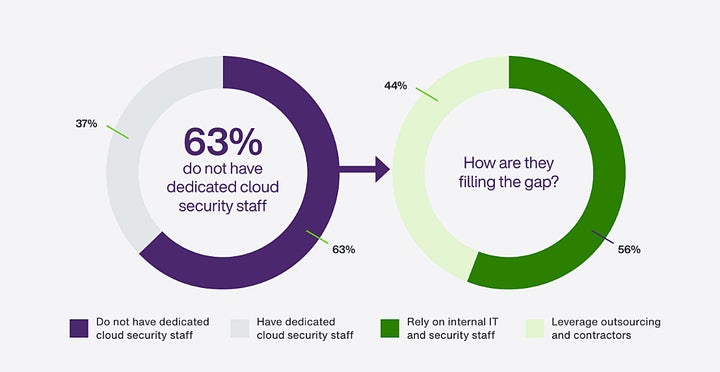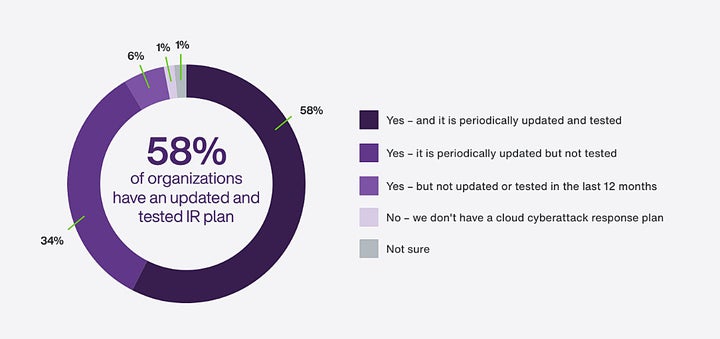
“The cloud” — our own personal digital storage locker. It’s where our emails live, where we save files and how we back up our documents.
But in the digital sky, a new study has revealed that the cloud in Canada has become so much more than just where we stash our vacation photos; it’s now where over 50% of the data from Canadian organizations is stored.
For businesses, there are a lot of pros when it comes to storing data in the cloud: speed, cost efficiency and flexibility are among them. But over time, they’ve discovered that the cloud also comes with some pretty unique challenges.
So to learn more about managing the rapidly growing cloud, the team at TELUS Business surveyed over 500 cybersecurity experts.
What they found is that security has never been more important.
Across the board, almost all of those surveyed expressed that they find securing data in the cloud to be much more difficult than traditional IT solutions.
While organizations are confident enough to use the cloud, only 14% are comfortable with storing valuable or confidential data there.
It’s no surprise as to why — with more than half of our data, applications and workloads stored off-premise, there are more threats targeting the cloud than ever before.
In fact, the study revealed that the average Canadian organization is attacked more than 100 times per year. On average, these attacks result in businesses having to deal with 4–5 cloud security incidents annually.
Of course, there’s a price to all this: The study uncovered that the average cost to address just a year of cloud security incidents lands at $438,000.
So, with seemingly so much risk, are there ways that Canadian businesses can protect themselves and feel more confident securing their data in the cloud?
Yes, and it’s all about investing in the right resources.
In the case of the cloud, the right resources are human.

With more employees having access to the cloud, the security risks have grown. And while Canadian organizations cite training for employees as their top priority when it comes to reducing cyber threats, the data still indicates that “human error” is one of the main causes of cybersecurity incidents.
This is because sometimes new resources are rolled out without proper training or without addressing cloud-specific best practices. And this lack of education can cause users to make some unintentional, yet super harmful and costly errors (think: the $438,000 price tag above).
Managing this training — and, of course, the cloud itself — can be daunting, and yet the study exposed that only 37% of businesses actually have dedicated cybersecurity staff who have the skills and tools to secure the cloud and act as resources.

When you start putting the puzzle together, it’s clear: the majority of these organizations are operating their cloud with some fairly sizable human knowledge gaps.
But the skies are clearing.
Businesses are, in fact, aware they’re not doing or spending enough when it comes to securing their data in the cloud.
The good news? They’re making changes. Within the next year, Canadian businesses have plans to increase their spending on cloud security by 22%.
An increase in cloud security budget is the “sun on the horizon,” especially as the study establishes that being informed and proactive are vital when it comes to protecting data in the cloud.
Greater resources will allow for more monitoring and threat detection, which are both key. Additionally, the more frameworks that are leveraged (blueprints and policies for managing risks), the less chance of incidents.

These cloud-specific measures often translate to huge wins when it comes to security.
For example, more than half of those surveyed have a response plan that’s periodically updated and tested. While the average response time for cloud security incidents lands at 3 days, those who periodically test can respond to an incident in less than 24 hours.
When it comes to cloud security, there’s no one size fits all.
From threat monitoring to more thorough training programs to deploying multi-factor authentication, there are so many ways to keep your data safer and cushioned in the cloud.
If you’re looking to learn more (or to get started on your cloud journey), you can think of the TELUS Canadian Cloud Security Study like a menu of security strategies.
To access all the insights from the TELUS Canadian Cloud Security Study, download your free copy here.


Be the first to comment